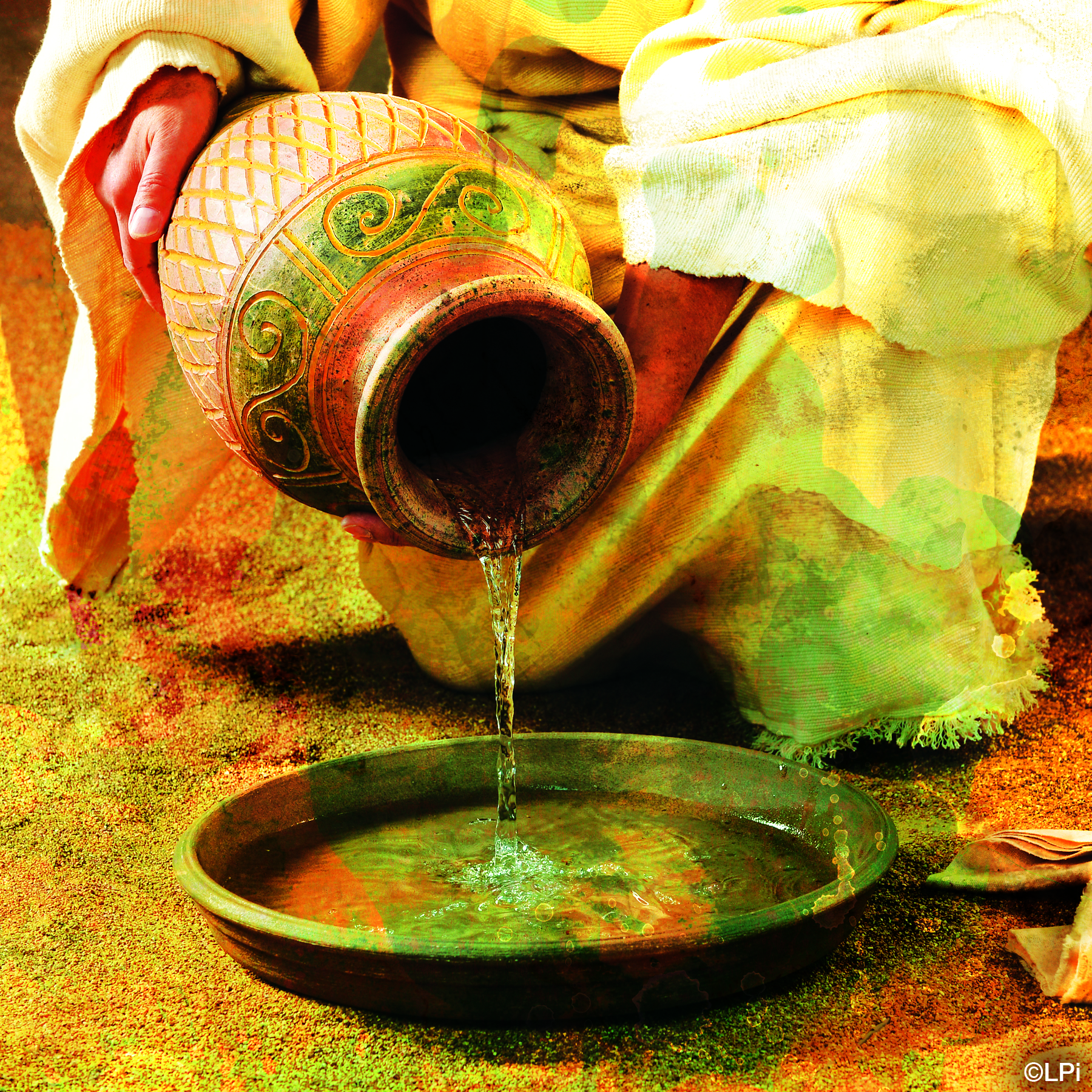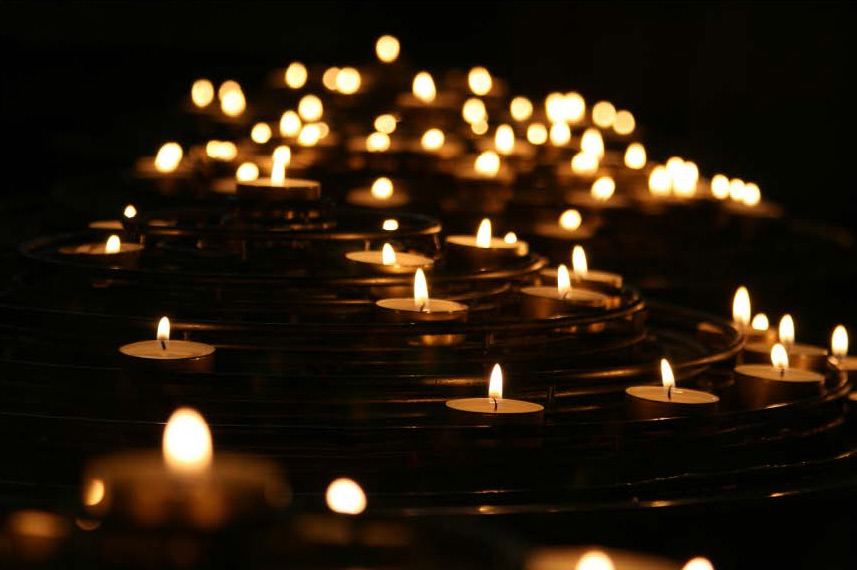The Triduum is the time of the Church year when we celebrate the passion, death, and resurrection of Jesus Christ. This threeday celebration begins with the Holy Thursday Mass and continues on Good Friday with the Liturgy of the Lord’s Passion. At the end of this liturgy, we leave the church in silence, waiting to celebrate the glory of our Lord’s resurrection. Then, on Saturday at sundown, the Church re-gathers to celebrate the final, and most grand moment of the Triduum: the Resurrection of our Lord.
The Triduum is somewhat like a three-day prayer marathon, and if you are a novice there may be some rituals that are unfamiliar to you. This guide will help you walk and pray through the liturgies of the Triduum.
Holy Thursday
The Mass on Holy Thursday is commonly known as the Feast of the Lord’s Supper. This Mass is a time for Catholics to remember the Last Supper where Jesus and his apostles gathered to celebrate Passover. In the Holy Thursday celebration, two ritual actions stand out among the rest:

The Washing of the Feet
At the Last Supper, Jesus took a basin and a towel, got down on his hands and knees and washed the feet of all of his apostles. After this action, he commanded the apostles, “I have given you a model to follow, so that as I have done for you, you should also do” (John 13:15). This is Jesus’ commandment: Just as Jesus has been a servant to his apostles, so the apostles must go out into the world and be servants to everyone around them.
We are called to do the same in our daily lives. Well, we are not called literally to wash each other’s feet (though sometimes that may be the case). The action of washing one another’s feet reminds us of the call to humble servitude. Foot washing is not a re-enactment or re-creation of a past event, but rather, it is a commemorative action that reminds us that God calls us first and foremost to be servants to others in our daily lives.
The ritual washing of the feet can take place in many ways. Some churches choose to have 12 people, who represent the apostles, have their feet washed by the priest presiding over the celebration. Other churches invite the entire gathered community to have its feet washed (this particular tradition is very powerful because everyone is invited to come and have their feet washed by someone else in their community). However the ritual takes shape, foot washing should always be a reminder that Christ has called us to be servants to the entire world.
The Celebration of the Eucharist and the Eucharistic Procession At the very first Last Supper, Jesus also instituted the Eucharist for the Church. At this Holy Thursday celebration, we are reminded of who we are in Jesus Christ and that, through the sacrament of the Eucharist, we are and we become even more the Body of Christ together.
At the conclusion of the Holy Thursday celebration, there is no concluding prayer. Once the celebration of the Eucharist is completed, there is a Eucharistic Procession (where the Eucharist that is left from Communion is processed to a Chapel of Reservation). This procession to the Chapel of Reservation reminds us of Jesus’ time in the garden of Gethsemane when he prayed so fervently through the night. The entire community is invited to join in this procession and then join in the silent prayer and adoration until night prayer is prayed and the Eucharist is put in the Tabernacle. The gathered community leaves in silence only to return in prayer the next day for the Good Friday celebration.
Reflection Questions for Holy Thursday:
- Who are those people who need our help the most?
- Am I willing to get down on my own hands and knees and help those who are unable to help themselves?
- What does the sacrament of the Eucharist mean to me?
Good Friday: Liturgy of the Lord’s Passion
In this solemn celebration, we remember the Passion and Death of Our Lord. The service is marked by several important rituals including the proclaiming of the Passion according to John, the Veneration of the Cross, an extended form of General Intercessions, and finally, the distribution of Communion (reserved from the Holy Thursday celebration of the Eucharist).
The Veneration of the Cross
It seems strange that in the Good Friday liturgy Catholics choose to venerate, or show reverence to, the very instrument that was used to crucify Jesus. The Veneration of the Cross reminds us that through this Cross, the Glory of the resurrection emerges. So, on Good Friday, we come forward to show our great reverence and respect for the Cross. People have various traditions when they approach the Cross. Sometimes they kiss the Cross, kneel before the Cross, or even just touch it in some fashion. As you participate in this ritual, venerate the Cross in whatever way feels most normal. And most of all, just take in the experience of the gathered community coming so close to such a tragic, but integral, event in our faith.
The General Intercessions
If you enjoy spiritual aerobics, then this ritual is for you! In this expanded form of General Intercessions, the presider and the deacon work together to pray 10 intercessions. These intercessions are the same intercessions the entire Church prays on Good Friday, and they include praying for the Holy Church, praying for the unity of all Christians, praying for the Jewish people, praying for people who do not believe in Christ or in God, praying for people in public office, and praying for people who are suffering or facing difficult times. These prayers recognize how universal our Church is and that we should be aware of all of the faiths and traditions in the world that are different from our own.
Reflection Questions for Good Friday:
- What does the death of Jesus mean to me?
- What does it mean to “Glory in the Cross”?

The Easter Vigil
The celebration of the Easter Vigil tells the whole story of our salvation — from creation to resurrection and beyond. Because of all the ritual moments, this service tends to be on the lengthy side (an average Easter Vigil will last at least 2-2 1/2 hours). But don’t let the length of the celebration detract you from participating. The Easter Vigil includes the lighting of the Easter Fire and Paschal Candle (the large candle that we will use throughout the year), the singing of the Exsultet (the Easter Proclamation), the expanded Liturgy of the Word that traces time through Salvation History (the story of our Salvation), the Liturgy of Initiation (where new people come into the Church), and the celebration of the Holy Eucharist. All these rituals come together for one purpose: to remember and recall the saving deeds of our God on our behalf. Here’s an explanation of two moments from the celebration.
The Singing of the Exsultet
The Exsultet, or the Easter Proclamation, is a hymn that is sung by a deacon, priest, or cantor. This hymn speaks of how God has interceded in our lives on our behalf. The Exsultet especially recalls the Holy Night when Jesus Christ rose from the dead. What makes this moment particularly dramatic is that the Exsultet is sung in a church lit only with the light of the Paschal Candle and other smaller candles, which people are holding. In order to pray this hymn along with the deacon, priest, or cantor, try reflecting on the words of the hymn throughout Holy Saturday.
The Liturgy of the Word
The Liturgy of the Word for the Easter Vigil is comprised of nine readings and seven responsorial psalms. The first reading begins with the story of Creation and then, each subsequent reading recounts the story of our faith lives through history. You’ll hear the story of Issac and Abraham, the story of Moses and the Exodus, and more. All of these readings lead up to the singing of the Gloria when all the lights come on in the church, and then the final reading, the Resurrection of Christ, is proclaimed. Why so many readings? Again, like the singing of the Exsultet, the readings recount the many ways in which God has interceded on our behalf throughout history.
Most churches do not do the entire set of nine readings (for time’s sake). But keep in mind that the point is to recall how God has interceded on humanity’s behalf from the very beginning of time and that through this Easter Vigil we celebrate that God is present and always working in our lives, even still today.
Reflection Questions for the Easter Vigil:
- How has God interceded in my life?
- After hearing the Resurrection story, what events do I see in my own life that are in need of new life, in need of resurrection?
- How can I carry on the story of the resurrection to others? Easter
Throughout these three days, we experience the highs and lows in our faith, ending with the ultimate high — the new life of the resurrection. The Easter Season begins with the Easter Vigil, and we enter a time (50 days) when endless “Alleluias” will ring out throughout all of our liturgical celebrations. May you experience the joy of new life in your own way this Easter Season. Have a happy and blessed Easter!
Julianne E. Wallace is the director of campus ministry at Alvernia University in Reading, Pennsylvania. She is currently working on a D.Min. in Educational Leadership from Virginia Theological Seminary. She earned an M.T.S. in Word and Worship from the Washington Theological Union in Washington, D.C. and a B.A. in Music Performance from the University of Mary Washington in Virginia. Julianne is passionate about sharing the joy of liturgy with others and helping everyone to worship well.